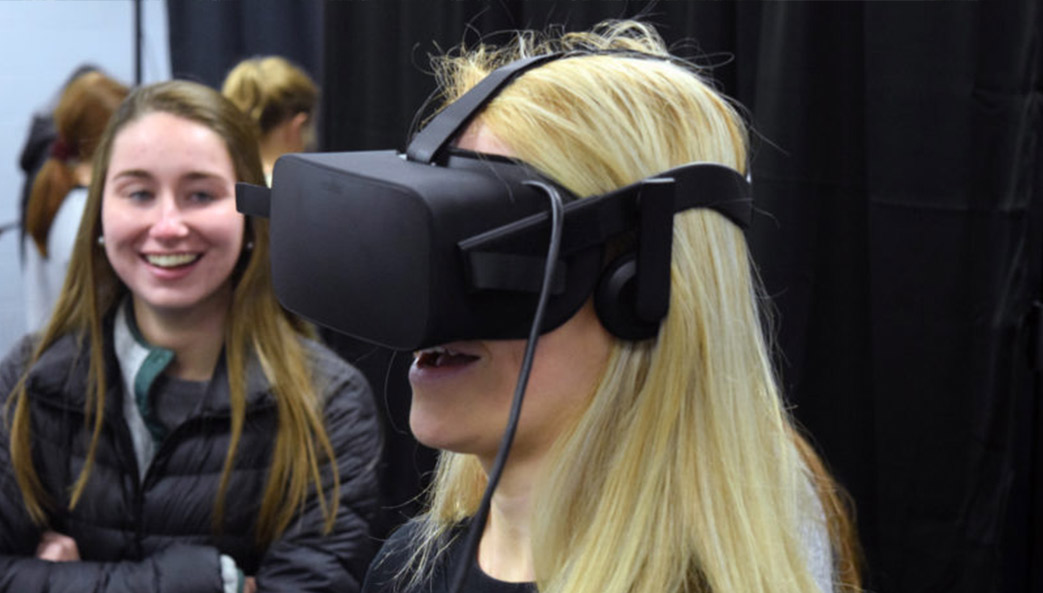When Nadja Zeltner started exploring a little-known compound called genipin, she didn’t just see a fascinating molecule.
Derived from the plant gardenia jasminoides and used for centuries in traditional Chinese medicine, genipin is a naturally occurring compound that serves as a cross-linking agent, binding components together at the molecular level. Today, it’s commonly used for things like bioengineering or food dyes.
“Genipin itself isn’t new,” said Zeltner, associate professor of biochemistry & molecular biology and cellular biology in the Center for Molecular Medicine and Franklin College of Arts and Sciences. “So far, though, no one has looked at applying it to the peripheral nervous system (PNS). That is what we go for.”
Specifically, Zeltner wanted to examine genipin’s value as a neurological therapeutic. According to the National Institute of Neurological Disorders and Stroke, an estimated 20 million Americans suffer from peripheral neuropathy, a condition that affects nerves outside the brain and spinal cord. It’s caused by a variety of diseases like diabetes, kidney disease, and autoimmune disorders, and can be linked to diseases like Alzheimer’s and Parkinson’s.
Zeltner launched NeelaCell Therapeutics in hopes of better arming the peripheral nervous system against these threats. Having successfully secured a Georgia Research Alliance (GRA) Phase 1 grant to kickstart its work, NeelaCell Tx is pursuing two strategic goals: first, to advance the use of genipin to clinical trials in peripheral neuropathy treatments; and second, to create specialized cell types that researchers can use to study genipin for broader scientific applications.

For Zeltner and her team, the focus is to harness genipin’s potential to protect and repair the PNS, which controls vital functions like sensation/pain, movement, and organ regulation. Peripheral neuropathy is not a single disease but a cluster of conditions, often precipitated by factors such as diabetes, chemotherapy, infections, injuries, or others.
Genipin acts like a protective cloud, firming the environment of the cells, which repairs broken lines of communication. It also acts as an anti-inflammatory agent and calms the neurological chaos caused by the disease. In peripheral neuropathy, cells in the nervous system lose contact and eventually die. Genipin appears to prevent this damage by locking proteins into more stable shapes, reinforcing biological structures that are often falling apart. Genipin further supports the regrowth of damaged, but not yet dead cells.
“At the moment, there are no approved drugs to treat peripheral neuropathy,” Zeltner said. “If a patient walks into a doctor’s office with symptoms like pain, tingling, or numbness, the standard approach is to treat the underlying cause, such as diabetes, and hope the symptoms of neuropathy don’t get worse. Our goal is to treat the neuropathy, irrespective of the cause.”
This is where NeelaCell Tx comes into play.
To make progress, her team needed a way to model the broad condition in the lab. They settled on familial dysautonomia (FD), a rare genetic disorder that affects nerve development and regulation of autonomic bodily functions, such as breathing and heart rate, as well as sensory processing, such as pain. For those suffering from FD, simple actions like staying upright or eating can become dangerous.
Zeltner and her team saw genipin as a potential treatment.
“FD is a model disease,” Zeltner explained. “In this disease, the neurons that feel pain don’t develop properly. Patients are born with too few neurons, and, over time, the remaining ones also die, making the condition progressively worse.”
Genipin seemed to make a striking difference, however. In Zeltner’s model, both mice and human cells developed normally when treated with the compound. It helped restore nerve function and reversed signs of the disease.
The key was how it worked. Genipin’s natural cross-linking ability—stitching molecules together into a stronger structure—stiffened the nerves’ extracellular matrix (ECM).
“It makes it a little stiffer, which seems to be supportive of the neurons,” Zeltner said. “That makes them happier, makes them regrow.”
Zeltner thinks the effect could extend beyond FD to conditions like diabetic neuropathy, chemotherapy-induced nerve damage—and even nerve damage from injury.
“(Familial dysautonomia) is a model disease. In this disease, the neurons that feel pain don’t develop properly. Patients are born with too few neurons, and, over time, the remaining ones also die, making the condition progressively worse.”
– Nadja Zeltner, associate professor of biochemistry & molecular biology and cellular biology, Franklin College of Arts and Sciences, Center for Molecular Medicine
The genipin research grew out of Zeltner’s long-standing interest in stem cells and their potential to drive drug discovery. She began working with the compound in 2017 as a postdoctoral researcher at Memorial Sloan Kettering Institute in New York, where she studied FD and screened drugs that could restore nerve development. By the time she joined UGA in 2018, the vision for genipin was clear.
Kenyi Saito-Diaz, a postdoc in her lab, played a critical role in uncovering how genipin works. Zeltner credits UGA’s collaborative environment for much of the progress.
“I learned so much from other labs,” Zeltner said, “and I know the genipin research would not know its mechanisms if it weren’t for my collaborators here at UGA.”
The next step for genipin—and NeelaCell Tx—is to keep moving it toward clinical trials in humans.
“That’s a long and expensive journey,” Zeltner said.
She has worked with UGA’s Innovation Gateway to help launch the startup, securing key patents and participating in entrepreneurship programs like Innovation Bootcamp and NSF I-Corps.
For now, Zeltner is working to secure more grants and keep the momentum going. With NeelaCell Tx, she hopes a small compound will lead to big breakthroughs in treating peripheral neuropathy and beyond.






